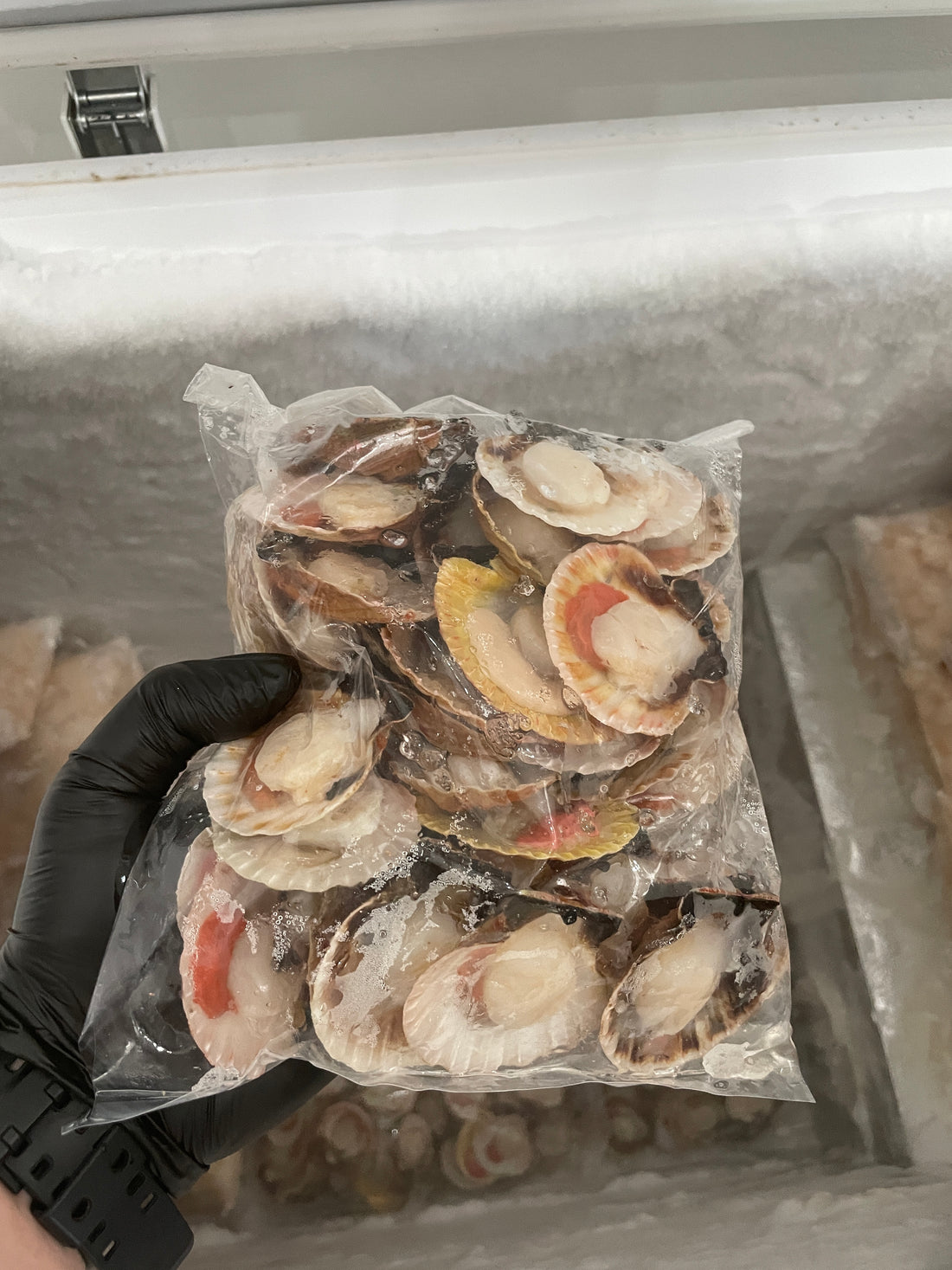
Bantayan Island Scallops: A Delightful Treat from Northern Cebu
Share
Bantayan, an island located in the Visayas region of the Philippines, is known for its white sandy beaches and crystal clear waters. But aside from its beautiful scenery, the island is also home to a delicious seafood delicacy: Scallops.
Brief History of Bantayan Island Scallops
Bantayan Island has been a fishing community for centuries, with the locals relying on the sea for their livelihood. Scallops, also known locally as "conchas," have always been a staple in their diet and were traditionally harvested by diving and gathering them by hand. However, as the demand for scallops increased, local fishermen began to use small boats and fishing equipment to harvest them in larger quantities.
The Harvesting Process
The harvesting of Bantayan Island Scallops is done during the months of October to May, when the scallops are at their peak of flavor and quality. The scallops are carefully hand-picked by experienced divers, who must hold their breath for several minutes to reach the depths where the scallops are found. The scallops are then brought to the surface and immediately cleaned, sorted and packaged for distribution.
The Unique Flavor of Bantayan Island Scallops
Bantayan Island Scallops have a distinct and unique flavor that sets them apart from other scallops found in other parts of the world. The clear waters surrounding Bantayan Island provide the scallops with a clean and pure taste, with a delicate sweetness and a subtle hint of saltiness. The texture of the scallops is also noteworthy, with a delicate and tender texture that is both satisfying and satisfyingly satisfying.
JRA Seafood Fresh Frozen Scallop Meat
Cooking Bantayan Island Scallops
Bantayan Island Scallops can be cooked in a variety of ways, from grilling to sautéing to steaming. They can be enjoyed as an appetizer or a main course, and are often served with a simple garlic butter sauce or a flavorful tomato-based sauce. Some local delicacies include scallops cooked in coconut milk and scallops grilled with a tangy vinegar marinade.
Sample Scallop Meat Recipes

Scallop Meat with Bacon and Spinach - Sear scallops on one side and finish cooking by adding them back to the pan. This method keeps the scallops tender while maintaining a crisp exterior. This dish is perfect for a dinner party or to elevate a regular weekend meal.

Simple Baked Scallop Meat - Searing scallops in a heavy skillet over high heat is a delicious way to prepare them. The scallops will have a delicate texture inside and a crispy brown crust on the outside. This dish is also easy to prepare, making it a great option if you need to cook a meal while multitasking.

Carbonara with Scallops and Shrimps - perfectly cooked spaghetti is paired with a rich, creamy sauce, creating a delicate balance of texture and flavor. The scallops and shrimp add a touch of sweetness, while the pancetta or bacon adds a smoky depth. The sauce is carefully crafted with a harmonious blend of tangy Parmesan cheese, heavy cream, velvety egg yolks, garlic, parsley and pepper, creating a luxurious blanket of flavor that coats each strand of pasta.
Availability
Bantayan Island Scallops are now available in Cebu City daily via JRA Seafood. JRA Seafood ensures that the scallops are caught and delivered fresh to customers in Cebu City, so that you can enjoy the same taste and quality of Bantayan Island Scallops even if you are not on the island.
Conclusion
Bantayan Island Scallops are a delicious and unique delicacy that is not to be missed. The clear waters surrounding Bantayan Island provide the scallops with a clean and pure taste, with a delicate sweetness and a subtle hint of saltiness. The texture of the scallops is also noteworthy, with a delicate and tender texture that is both satisfying and satisfyingly satisfying. If you're in Cebu City, be sure to try this delicious delicacy through JRA Seafood, and enjoy the taste of the sea in every bite.


